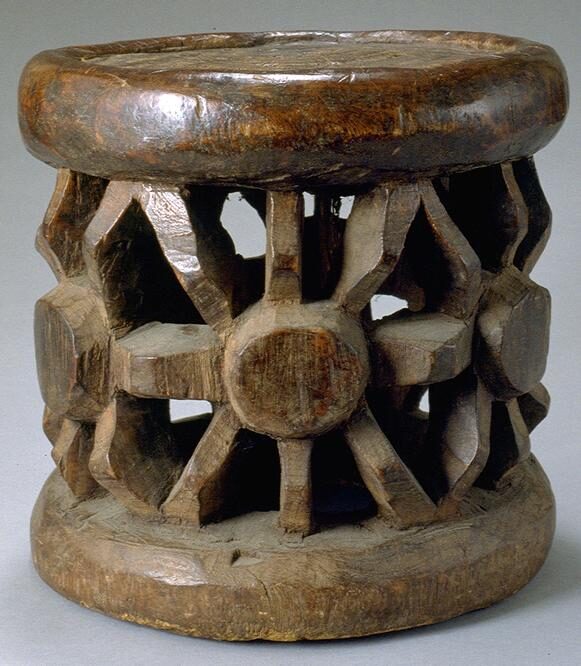Stool
Cameroon

Description
Subject Matter:
Throughout the Grassfields region of Cameroon, material culture acted as a signifier of a person’s place within the social hierarchy that many kingdoms in this area share. The king, in some kingdoms called the fon, had control over what motifs or symbols could be used on different objects by certain classes of people. A symbol of the fon’s power and authority, stools with royal icons were used exclusively by the fon. Some elite men could have stools with certain royal symbols, but only with permission from the fon. This stool could have belonged to a man of elite status, as important men often had carved wooden stools with human or animal figures. The figure in this object represents a spider, associated with the power of the fon and the process of divination. Also known as an earth-spider, because the spider lives underground, it is thought to be closer to ancestors and other spirits. As the fon is also close to the spirit world, the spider is a symbol of royal power and wisdom.
References:
Homberger, L. 2008. Cameroon: Art and Kings. Zürich: Museum Rietberg.
Northern, Tamara. 1984. The Art of Cameroon. Washington, D.C.: Smithsonian Institution.
Page, Donna. 2007. A Cameroon World: Art and Artifacts from the Caroline and Marshall Mount Collection. New York: QCC Art Gallery Press.
Pemberton, John III. 2008. African Beaded Art: Power and Adornment. Northampton, Mass.: Smith College Museum of Art.
Physical Description:
This is a wooden stool with a circular base and a flat, circular seat. The seat is supported by an openwork design consisting of a circle with eight lines projecting outward. This motif is repeated six times around the stool.
Usage Rights:
If you are interested in using an image for a publication, please visit https://umma.umich.edu/request-image/ for more information and to fill out the online Image Rights and Reproductions Request Form.